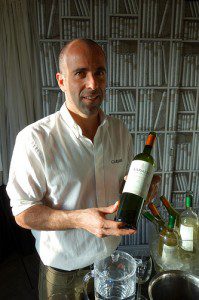Italian Wine Focus: Sicilia
Seminar 3: Wines of Sicilia Sicilia is the biggest island of the Mediterranean. The Northern part of the island is a continuation of Apennine Mountain chain. Wine production is concentrated on the western part of Silicia. The island is composed of 60% hill, 25% mountain and 15% flatland and the weather is very hot and windy. There is a great variety of soil, climate and land. The West has red soil (oxidized with iron); the South has clay; the East has limestone. In total, there are 111.2 hectares planted. Silicia is a heritage of different cultures that have influenced the wine production in the area. 1500 BC, the Phoenicians brought grapes and began winemaking; 800 BC, the Greeks (enotria or land of wine) brought vine training systems (ie. Goblet system); 200 BC, the Romans perfected and continued the wine making tradition; 600 AD, the Arabs colonized Sicily and brought Moscato grapes to produce raisins to eat.
17 June, 2013












